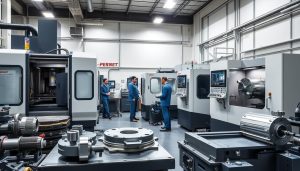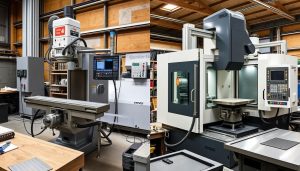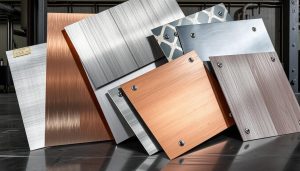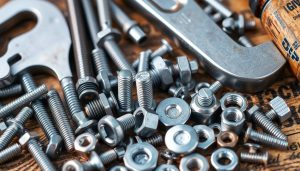In today’s competitive world, making parts with tight tolerances is key. This is true for industries like aerospace, medical, and high-tech. These fields need precision and accuracy more than ever. So, how do you make sure your parts meet these high standards?
The answer is to understand tight tolerances well and use the right strategies. This will help you keep your parts precise.
Imagine being able to make parts that always meet the tightest specs, even in tough environments. This article will show you how to achieve tight tolerances in your machined parts. It will help you become a reliable partner for clients who demand the best.
Understanding Tight Tolerances
In the world of precision machining, tight tolerances are key to excellence. These narrow limits set the acceptable variation in part dimensions. This ensures a perfect fit and optimal performance in critical applications.
What Are Tight Tolerances in Machining?
Tight tolerances mean very small allowed differences in size, shape, and position. Machining precision is vital, as small errors can affect a part’s function and fit. Manufacturers aim for tight tolerances to meet strict needs in aerospace, medical devices, and high-end electronics.
Why Tolerances Matter in Critical Applications
In critical areas, tight tolerances definition is crucial for quality control. Even small changes can have big effects. For example, in aerospace, precise machining precision is key for aircraft safety. In medical devices, tight tolerances are essential for implants and surgical tools to work right.
| Industry | Importance of Tight Tolerances |
|---|---|
| Aerospace | Ensures structural integrity and safety of aircraft components |
| Medical Devices | Enables proper functioning and reliable performance of implants and surgical tools |
| High-End Electronics | Allows for efficient performance and compatibility of electronic components |
By keeping tight tolerances definition, makers can make parts that meet high standards. This is crucial in critical applications, where precision and quality are essential.
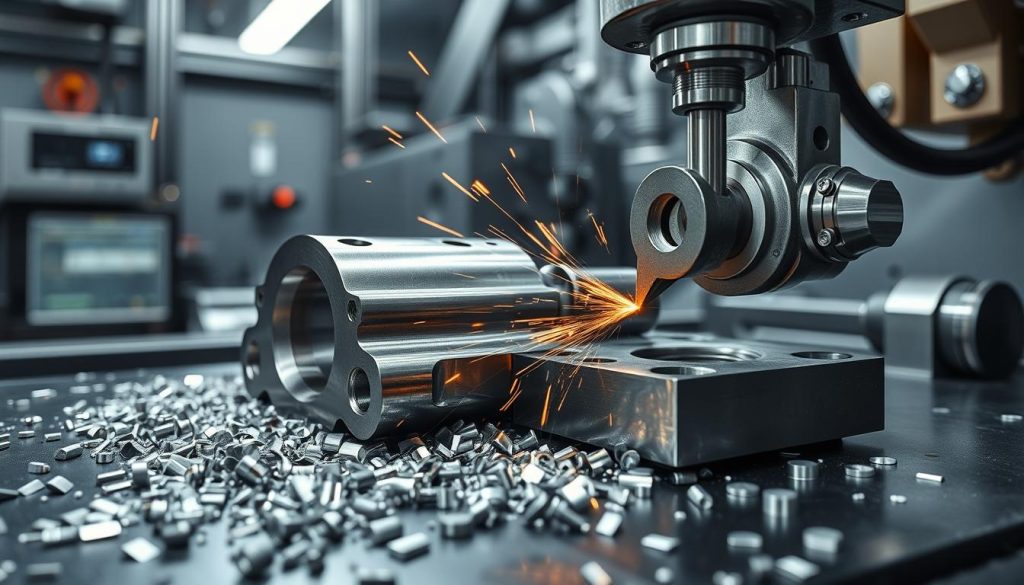
Factors Affecting Tight Tolerances
Getting tight tolerances in machined parts is all about balance. The right material properties and machine stability are key. Plus, the operator’s skill matters a lot for accuracy.
Material Selection and Properties
Choosing the right material is critical for tight tolerances. Each material has its own material properties that affect machining. You need to think about hardness, thermal expansion, and how easy it is to machine to get the precision you need.
Machine Stability and Precision
The machine’s stability and precision are vital for tight tolerances. Machine stability keeps the tools and workpiece aligned, reducing errors. CNC programming also boosts the machine’s accuracy and consistency.
Operator Skill and Programming Accuracy
The human touch is important too. Operator expertise in setting up and monitoring the machine is crucial. The CNC programming accuracy also affects the final part’s precision.
“Achieving tight tolerances is not just about the equipment; it’s a combination of material selection, machine capabilities, and the expertise of the operator.”
By focusing on these factors, manufacturers can make high-quality parts that meet strict standards.

Tips to Maintain Tight Tolerances
Keeping machined parts within tight tolerances is key for many important uses. To make sure your parts are up to spec, consider a few important tips. Using top-notch cutting tools and advanced CNC software are crucial steps to precision.
Using High-Quality Cutting Tools
The quality of your cutting tools greatly affects your parts’ accuracy and consistency. Choose cutting tools made for precision to keep tolerances tight. Look for tools with the right coatings, shapes, and materials for the best performance and life span.
Regular Machine Calibration and Maintenance
Keeping your machine calibrated and well-maintained is vital for tight tolerances. Regularly check and tweak your machine’s alignment, temperature, and other key settings. Also, have a detailed precision maintenance plan to handle any issues or wear that could affect accuracy.
Leveraging Advanced CNC Software
Using advanced CNC software helps a lot in keeping tolerances tight. These tools offer features like real-time monitoring, adaptive control, and advanced programming. They let you control the machining process more precisely, leading to better part quality.
“Maintaining tight tolerances requires a comprehensive approach that encompasses high-quality tools, meticulous machine maintenance, and the latest software advancements.”
By sticking to these tips, you’ll boost your chances of consistently hitting tight tolerances in your machining. Investing in the best tools, processes, and tech will greatly improve part quality and customer happiness.
Challenges and Solutions for Tight Tolerances
Getting tight tolerances in metal cutting is hard. Things like material variability and thermal expansion make it tough. Knowing these challenges helps find good tolerance solutions and improve metalworking projects.
Addressing Material Variability
Material differences in metals and alloys are a big problem. Small changes in what the metal is made of can affect how it cuts. To solve this, picking the right metal cutting techniques and strict quality checks are key.
Overcoming Thermal Expansion Issues
Thermal expansion also affects tight tolerances. As tools and workpieces heat up, they can change size. To fix this, using precise temperature control, cooling systems, and computer numerical control (CNC) software helps a lot.
“Achieving tight tolerances in metal cutting requires a comprehensive understanding of the factors that influence precision and the implementation of targeted solutions to overcome these challenges.”
By tackling material variability and thermal expansion, makers can make parts with tight tolerances better. It’s all about choosing the right materials, using advanced cutting methods, and controlling the process well.
Shixinproto’s High-Precision Machining Services
At Shixinproto, we know how crucial tight tolerances are in many fields. Our advanced facility and skilled team are ready to meet your precision needs.
Achieving Tight Tolerances with Advanced Technology
Our dedication to precision machining is fueled by the latest technology. Our CNC machines and metrology tools ensure parts meet strict standards. Trust us for aerospace, medical, or automotive parts.
Why Shixinproto is a Trusted Partner for Precision Projects
Shixinproto has built a strong reputation over the years. Our focus on quality and detail has won us the trust of top manufacturers. Choose us for your precision machining needs, and you’ll get top-notch service.

